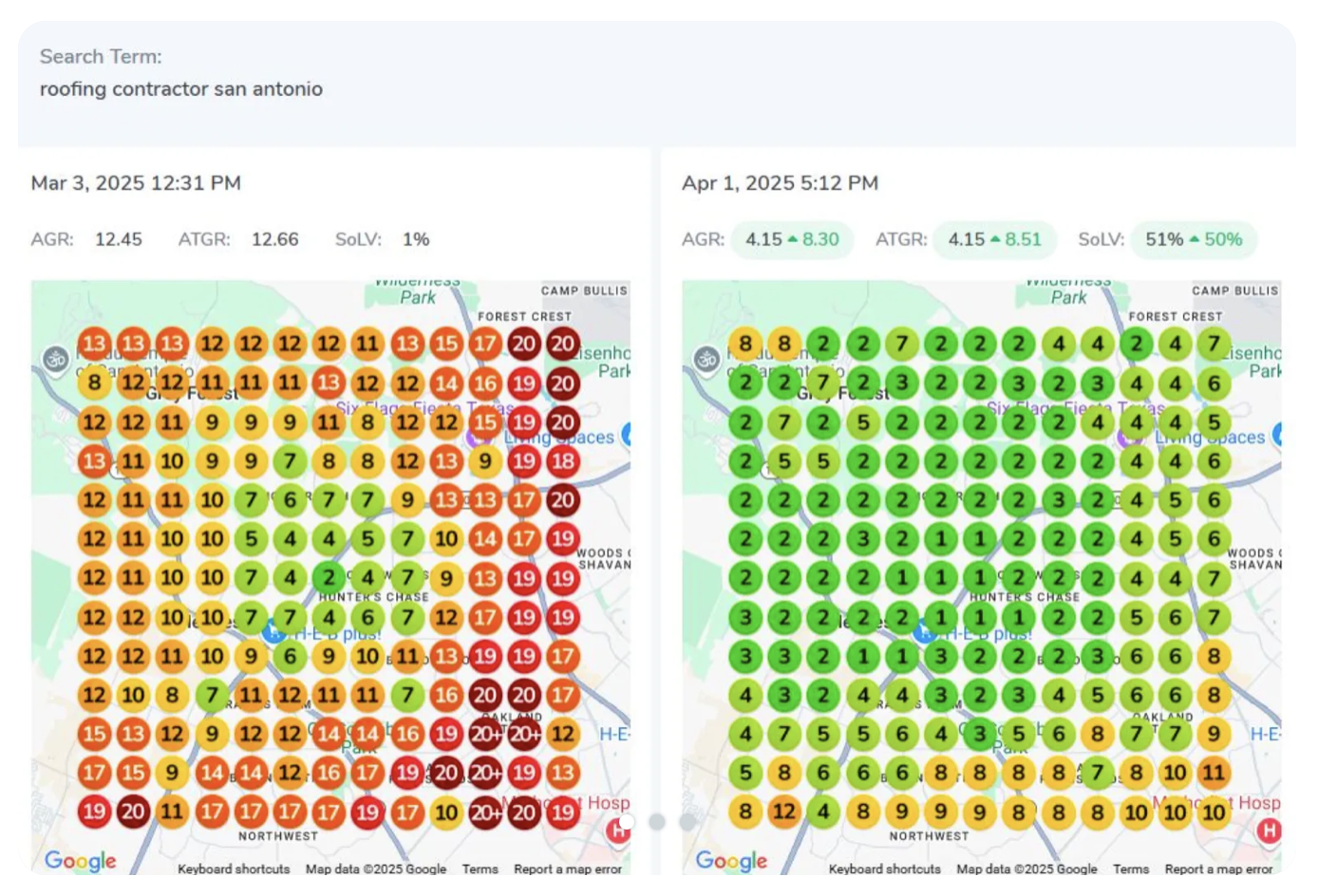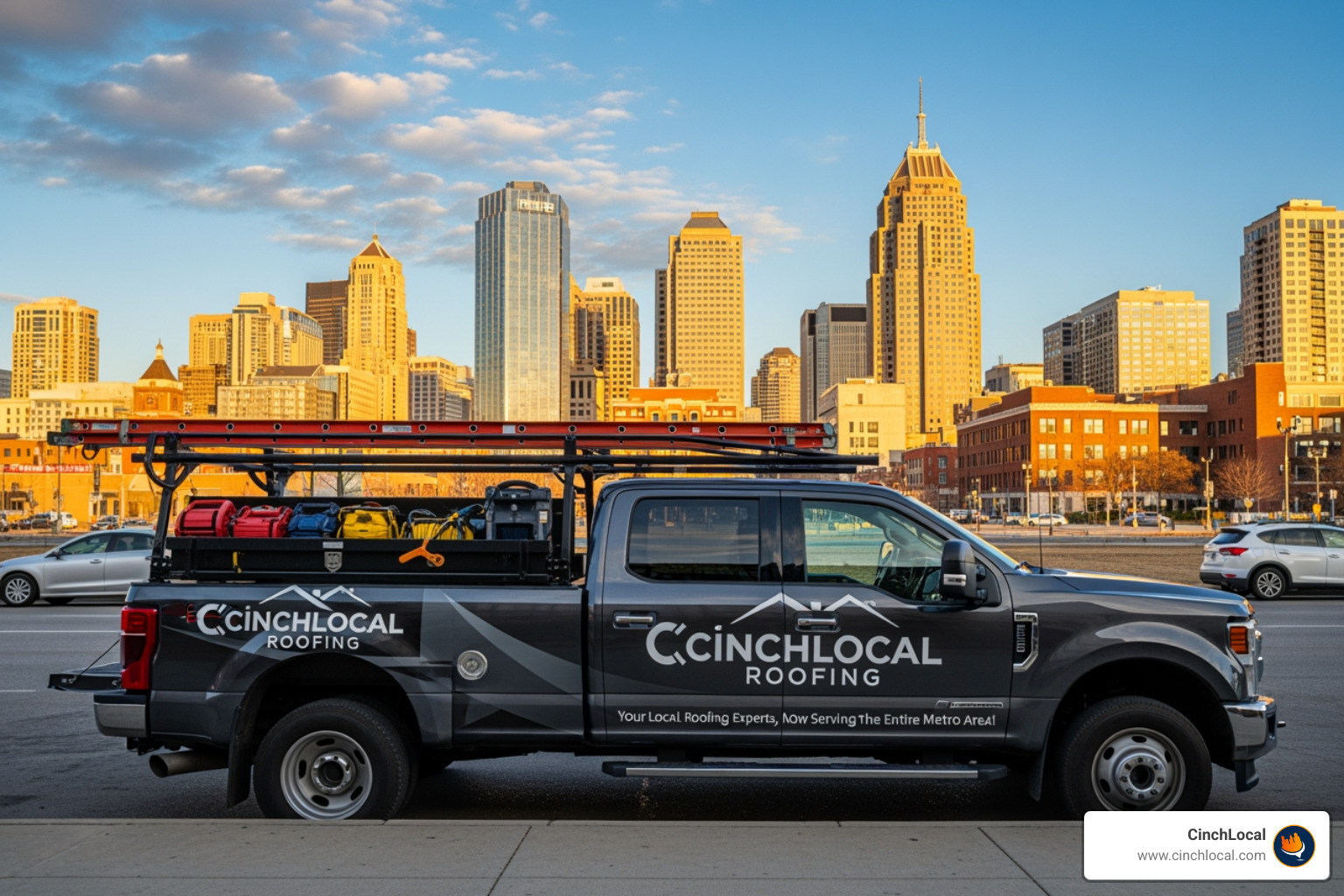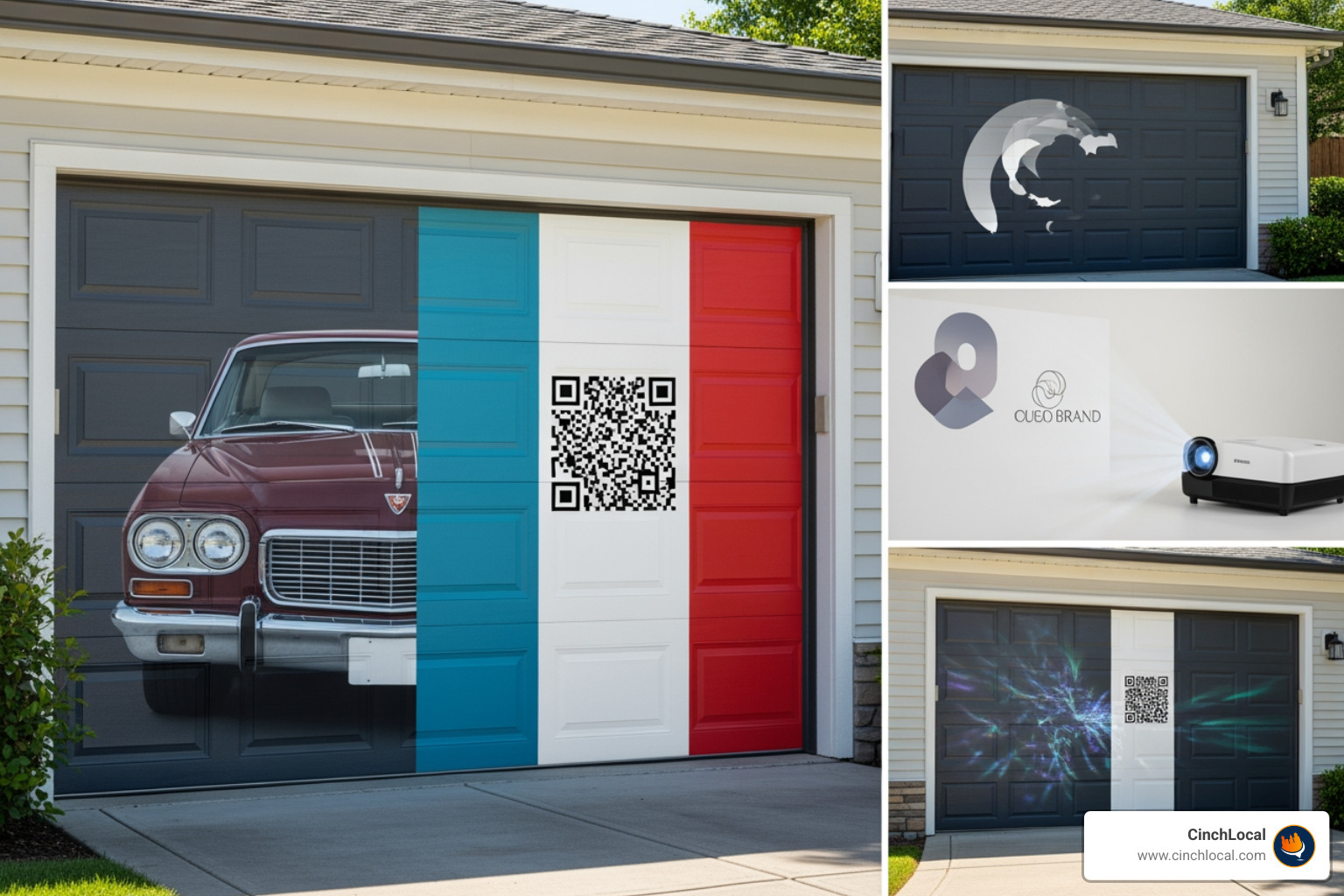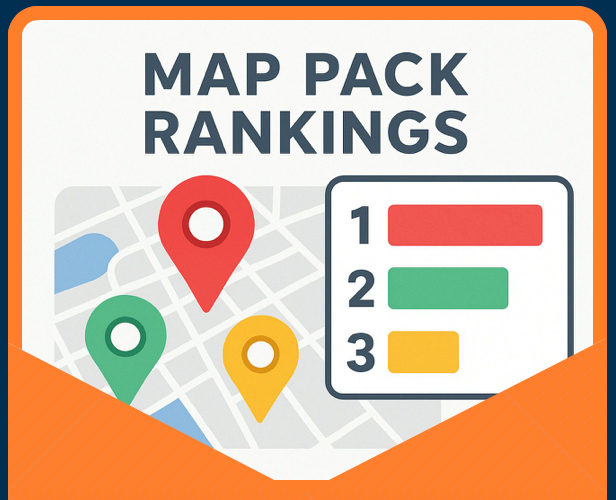
Cary Byrd // Founder of CinchLocal
Creating a Roofing Website:
DIY Guide for Roofers

Why Your Roofing Business Needs a Professional Website
Learning how to make a roofing website is one of the smartest business decisions you can make as a contractor. Here's your quick roadmap to get started:
Essential Steps to Build Your Roofing Website:
- Choose your platform - WordPress, Wix, or Squarespace
- Select a roofing template - Professional, mobile-responsive design
- Add essential content - Services, testimonials, contact info
- Optimize for local search - Google My Business integration
- Include trust signals - Reviews, certifications, project photos
- Launch and promote - Social media, SEO, local directories
The numbers don't lie: 80% of people research a business online before contacting them , and 4 out of 10 people will leave a website if the layout is unattractive . Even more compelling, longer pages generate 220% more leads than short pages, and 76% of people who search for a business on their smartphone visit within a day .
Your roofing website isn't just an online brochure - it's your 24/7 sales rep that works while you sleep. It builds trust, showcases your work, and turns visitors into paying customers.
I'm Cary Byrd, CEO and founder of CinchLocal, a roofing marketing agency in Boerne, TX. Over the past decade, I've helped hundreds of roofing contractors learn how to make a roofing website that generates consistent leads and grows their business. This guide will give you the same proven strategies we use with our clients.

Explore more about how to make a roofing website :
Why Every Roofing Company Needs a Professional Website
Think your roofing business can survive without a website? Think again. We live in a digital world where your online presence directly impacts your bottom line.
Here's what happens when customers need roofing services:
- They grab their phone and search "roofers near me"
- They scroll through Google Maps listings
- They visit 3-4 websites before making a decision
- They read reviews and look at project photos
- They call the contractor who appears most professional and trustworthy
If you're not online, you're invisible to these potential customers. It's that simple.
The Lead Generation Power of Websites
A well-designed roofing website is a lead generation machine. Research shows that longer pages generate 220% more leads than short pages - and there's a reason for this. When you provide comprehensive information about your services, showcase your expertise, and build trust through testimonials and project photos, visitors are more likely to convert.
Building Credibility Through Reviews and Social Proof
Here's a stat that should grab your attention: 92% of people read reviews before making a purchase, and 88% trust online reviews as much as personal recommendations . Your website is the perfect place to showcase these reviews and build credibility.
Mobile Traffic Dominance
According to Statista , over 50% of worldwide traffic comes from mobile devices, and for local businesses like roofing contractors, that number is even higher. When someone's roof is leaking or they've spotted storm damage, they're not waiting to get home to their computer - they're searching on their phone right now.
Trust Signals That Convert
Your website serves as a digital storefront where you can display trust signals that convert visitors into customers:
- Professional certifications and licenses
- Insurance verification
- Better Business Bureau ratings
- Manufacturer partnerships
- Years in business
- Local community involvement
The bottom line: In today's market, a professional website isn't optional - it's essential for growing your roofing business and staying competitive.
How to Make a Roofing Website: Choose Platform, Template & Build
Now that you understand why you need a website, let's dive into the practical steps of building one. The good news? Learning how to make a roofing website is easier than you might think, especially with today's user-friendly tools.
Planning Your Website Strategy
Before you start building, take time to plan. Ask yourself:
- What's your primary goal? (Lead generation, brand awareness, showcasing work?)
- Who's your target audience? (Homeowners, commercial property managers, insurance companies?)
- What services do you want to highlight?
- What's your budget and timeline?
Website Builders vs. Custom Development: The Real Comparison
| Feature | Website Builders | Custom Development |
|---|---|---|
| Cost | $100-$300 for templates | $5,000-$20,000+ |
| Time to Launch | 1-2 weeks | 10-14 weeks |
| Coding Required | None | Extensive |
| Customization | Limited but sufficient | Unlimited |
| Maintenance | Minimal | Ongoing |
| SEO Capabilities | Built-in basics | Advanced options |
Template Selection Strategy
When choosing a roofing template, look for:
- Clean, professional design
- Mobile responsiveness
- Fast loading speed
- Clear navigation structure
- Space for testimonials and project galleries
- Contact forms and call-to-action buttons
- SEO-friendly structure
How to make a roofing website with Website Builders (Step-by-Step)
Website builders are like IKEA furniture for websites - they come with clear instructions and pre-built parts that you assemble yourself. Here's how to build your roofing website using popular builders:
Step 1: Choose Your Builder
Popular options include:
- WordPress.org : Powers nearly 50% of all websites, offers the most flexibility
- Wix : User-friendly drag-and-drop interface, good for beginners
- Squarespace : Beautiful templates, great for visual businesses
- Webflow : Advanced design capabilities, steeper learning curve
Step 2: Select a Roofing Template
Look for templates specifically designed for construction or roofing businesses. These typically include:
- Hero sections with call-to-action buttons
- Service overview sections
- Project galleries
- Testimonial displays
- Contact forms
- About us pages
Step 3: Customize Your Design
Most builders offer drag-and-drop customization:
- Upload your logo and adjust colors to match your brand
- Replace placeholder text with your content
- Add your own photos and project images
- Customize fonts and layout spacing
- Set up navigation menus
Step 4: Add Essential Content
Include these must-have pages:
- Home page with clear value proposition
- Services page detailing what you offer
- About us page with your story and team
- Gallery showcasing your best work
- Contact page with multiple ways to reach you
- Testimonials page with customer reviews
How to make a roofing website with Custom Development
Custom development gives you complete control over your website's design and functionality, but it requires a bigger investment of time and money.
When to Consider Custom Development
Choose custom development if you:
- Have a larger budget ($5,000-$20,000+)
- Need unique functionality not available in templates
- Want a completely unique design
- Plan to integrate with specialized roofing software
- Have complex business requirements
Most roofing contractors find that website builders provide everything they need to create a professional, effective website without the complexity and cost of custom development.
Must-Have Features & Content That Convert

Your website's success depends on having the right features and content that turn visitors into customers. Based on our experience helping roofing contractors, here are the essential elements every roofing website needs:
Services Pages That Sell
Create dedicated pages for each service you offer:
- Roof installation and replacement
- Roof repair and maintenance
- Storm damage restoration
- Gutter installation and repair
- Siding services
- Emergency roofing services
Each service page should include:
- Clear description of what you do
- Benefits to the customer
- Before-and-after photos
- Pricing information (even if it's ranges)
- Call-to-action buttons
- Relevant testimonials
Before-and-After Project Gallery
Pictures are worth 1,000 words, so let your past jobs speak for you. Your project gallery should:
- Show dramatic changes
- Include a variety of roofing materials and styles
- Feature both residential and commercial work
- Include captions describing the project
- Be organized by service type or material
Customer Testimonials and Reviews
With 92% of people reading reviews before making a purchase, testimonials are crucial. Include:
- Customer name and location
- Specific details about the project
- Photos of the customer or their property
- Star ratings
- Video testimonials when possible
Clickable Phone Numbers
Make it easy for mobile users to call you. Your phone number should be:
- Prominently displayed in the header
- Clickable on mobile devices
- Repeated on every page
- Available in multiple formats (click-to-call buttons, text links)
Estimate Request Forms
Capture leads with forms that request:
- Contact information
- Property address
- Type of service needed
- Preferred contact method
- Brief description of the project
- Photos of the issue (for repairs)
Unique Selling Proposition (USP)
Clearly communicate what makes you different:
- Years of experience
- Certifications and licenses
- Warranty offerings
- Local community involvement
- Specialized expertise
- Emergency service availability
Educational Blog Content
A blog helps establish your expertise and improves SEO. Write about:
- Roofing maintenance tips
- Signs you need a new roof
- Different roofing materials
- Seasonal roofing concerns
- Insurance claim processes
- DIY vs. professional repairs
Frequently Asked Questions (FAQs)
Answer common questions to reduce phone calls and build trust:
- How long does a roof replacement take?
- What's included in your warranty?
- Do you work with insurance companies?
- What roofing materials do you recommend?
- How do I know if I need repairs or replacement?
Warranty and Guarantee Information
Clearly explain your warranties:
- Workmanship guarantees
- Material warranties
- What's covered and for how long
- How to file warranty claims
- Transfer policies for new homeowners
Social Media Integration
Include links to your social media profiles and consider:
- Embedding recent posts
- Social sharing buttons for blog content
- Customer photo contests
- Behind-the-scenes content
For professional roofing website development that includes all these features and more, explore our Roofing Websites service.
Showcasing Services, Projects & Reviews Effectively
The way you present your work can make or break your website's effectiveness. Here's how to showcase your services, projects, and reviews to maximize conversions:
Project Photo Best Practices
Use high-quality, authentic photos of your actual work:
- Take photos from multiple angles
- Include before-and-after shots
- Show different weather conditions
- Capture detail shots of craftsmanship
- Include aerial drone footage when possible
The Power of Photo Captions
Research shows that visitors are 4× more likely to read photo captions than body text. Use this to your advantage:
- Write 1-2 sentence captions for each project photo
- Include location and roofing material
- Mention any special challenges overcome
- Add relevant keywords for SEO
- Keep captions conversational and informative
Video Content That Builds Trust
Video content significantly boosts credibility and engagement:
- Create time-lapse videos of installations
- Record customer testimonials
- Show your team in action
- Explain complex roofing concepts
- Document storm damage assessments
Trust Badges and Certifications
Display your credentials prominently:
- Better Business Bureau accreditation
- Manufacturer certifications
- Insurance company partnerships
- Industry association memberships
- Local business awards
- Years in business
Review Display Strategy
Maximize the impact of your reviews:
- Feature your best reviews on the homepage
- Include relevant reviews on service pages
- Show recent reviews to demonstrate ongoing quality
- Include photos with reviews when possible
- Respond to all reviews professionally
Authentic vs. Stock Photography
Never use stock photos of roofing work - customers can tell the difference. Authentic photos:
- Build trust and credibility
- Show your actual work quality
- Demonstrate local projects
- Create emotional connections
- Improve SEO with original content
Your website is often the first impression potential customers have of your business. Make it count by showcasing your work professionally and authentically.
Design, UX & Mobile Optimization Best Practices

Great design isn't just about looking good - it's about creating an experience that guides visitors toward becoming customers. Here's how to design a roofing website that converts:
Responsive Design Essentials
With over 50% of web traffic coming from mobile devices, responsive design isn't optional. Your website must:
- Automatically adjust to different screen sizes
- Maintain readability on small screens
- Keep navigation accessible on mobile
- Ensure buttons are easily clickable
- Load quickly on mobile networks
Fast Loading Speed
Nobody has time for slow-loading pages. Optimize your site speed by:
- Compressing and resizing images
- Choosing reliable hosting
- Enabling browser caching
- Minimizing plugins and widgets
- Using efficient coding practices
Clear Navigation Structure
Keep your navigation simple and intuitive:
- Use descriptive menu labels
- Limit main menu items to 7 or fewer
- Include a search function
- Add breadcrumb navigation
- Create a logical page hierarchy
CTAs, Speed & Accessibility
Call-to-Action Optimization
Your CTAs should be impossible to miss:
- Use contrasting colors that stand out
- Place CTAs above the fold
- Keep text concise (4-5 words maximum)
- Use action-oriented language
- Test different versions to see what works
Effective CTA Examples for Roofers:
- "Get Free Estimate"
- "Call Now for Emergency Service"
- "Schedule Inspection"
- "View Our Work"
- "Request Quote Today"
Image Optimization Strategies
Images often slow down websites. Optimize them by:
- Compressing files without losing quality
- Using appropriate file formats (JPEG for photos, PNG for graphics)
- Implementing lazy loading
- Creating responsive images
- Adding descriptive alt text
Security & Compliance Essentials
SSL Certificate Implementation
An SSL certificate is non-negotiable:
- Encrypts data between your site and visitors
- Required for Google ranking
- Builds trust with customers
- Protects sensitive information
- Shows "https" in the address bar
Regular Backup Procedures
Protect your website with regular backups:
- Schedule automatic daily backups
- Store backups in multiple locations
- Test backup restoration procedures
- Keep backups for at least 30 days
- Include database and file backups
By implementing these design, UX, and security best practices, you'll create a website that not only looks professional but also performs well and keeps your customers' information safe.
Roofing SEO, Local Search & Performance Tracking

Creating a beautiful website is just the first step. To generate leads, your website needs to be found by potential customers. That's where SEO (Search Engine Optimization) comes in.
Keyword Research for Roofing Businesses
Start by identifying the terms your customers use when searching for roofing services:
- "roofers near me"
- "roof repair [city name]"
- "roof replacement cost"
- "emergency roof repair"
- "storm damage roofing"
- "metal roofing contractors"
On-Page SEO Fundamentals
Optimize each page of your website:
- Include target keywords in page titles
- Write compelling meta descriptions
- Use header tags (H1, H2, H3) to structure content
- Add keywords naturally throughout your content
- Include location-based keywords for local search
Google Business Profile Optimization
Your Google Business Profile is crucial for local visibility:
- Complete all profile sections
- Add high-quality photos
- Encourage customer reviews
- Post regular updates
- Respond to reviews promptly
- Include service areas and hours
For comprehensive SEO strategies specifically designed for roofing businesses, check out our detailed guide on Optimizing SEO for Roofing Businesses: Comprehensive Guide.
Local SEO & Google Maps Domination
NAP Consistency
Ensure your Name, Address, and Phone number are identical across:
- Your website
- Google Business Profile
- Online directories
- Social media profiles
- Citation websites
Service Area Pages
Create dedicated pages for each location you serve:
- Include city and neighborhood names
- Add local landmarks and references
- Include testimonials from local customers
- Show local project photos
- Mention local roofing challenges
Review Generation Strategy
Encourage satisfied customers to leave reviews:
- Ask at the completion of projects
- Send follow-up emails with review links
- Provide easy-to-use review request cards
- Respond to all reviews professionally
- Display reviews on your website
For detailed strategies on creating location-specific content, see our guide on Creating & Optimizing a Local Landing Page for Roofers.
Measuring Success: Analytics & CRO
Google Analytics 4 Setup
Track your website's performance:
- Set up conversion goals
- Monitor traffic sources
- Track user behavior
- Measure page performance
- Analyze mobile vs. desktop usage
Key Performance Indicators (KPIs)
Monitor these important metrics:
- Organic search traffic
- Local search visibility
- Conversion rates
- Average session duration
- Bounce rate
- Phone calls generated
- Form submissions
By implementing these SEO and analytics strategies, you'll ensure your roofing website not only looks great but also generates consistent leads and grows your business.
Conclusion & Next Steps
Congratulations! You now have a comprehensive roadmap for learning how to make a roofing website that generates leads and grows your business. Let's recap the key takeaways:
What You've Learned:
- Why every roofing business needs a professional website
- How to choose between website builders and custom development
- Essential features and content that convert visitors into customers
- Design and UX best practices for maximum impact
- SEO strategies to get found by potential customers
- How to track and measure your website's success
Your Next Steps:
- Choose Your Platform : Based on your budget and technical comfort level, select a website builder or decide on custom development
- Secure Your Domain : Register a domain name that reflects your business
- Select Your Template : Choose a professional roofing template that matches your brand
- Create Your Content : Write compelling copy and gather high-quality photos of your work
- Optimize for Local Search : Set up your Google Business Profile and implement local SEO strategies
- Launch and Promote : Go live and start driving traffic to your new website
Remember the Key Success Factors:
- Mobile-first design is non-negotiable
- Fast loading speeds keep visitors engaged
- Trust signals convert browsers into buyers
- Local SEO drives qualified traffic
- Regular updates and maintenance keep your site performing
When to Consider Professional Help
While this guide gives you everything you need to build a successful roofing website, sometimes it makes sense to work with experts who specialize in the roofing industry. Consider professional help if you:
- Want to focus on running your business instead of managing your website
- Need advanced features or integrations
- Want guaranteed results from day one
- Lack the time to implement all these strategies
- Want ongoing support and optimization
At CinchLocal, we specialize in creating high-converting websites specifically for roofing contractors. Our team understands the unique challenges and opportunities in the roofing industry, and we've helped hundreds of contractors build websites that generate consistent leads and grow their businesses.
Ready to Take Your Roofing Business to the Next Level?
Whether you decide to build your website yourself or work with professionals, the most important thing is to get started. Every day without a professional website is a day you're losing potential customers to competitors.
For more information about professional roofing website development and to see examples of high-converting roofing websites, visit our Roofing Websites page.
Learning how to make a roofing website is just the beginning. The real success comes from implementing these strategies consistently and continuously improving your online presence. Your future customers are searching for roofing services right now - make sure they find you.
Want Us to Uncover Hidden 'Footprint Gaps' And Critical Blind Spots That’s Quietly Draining Calls, Jobs, and Profits?
Simply Fill Out The Form Below:









